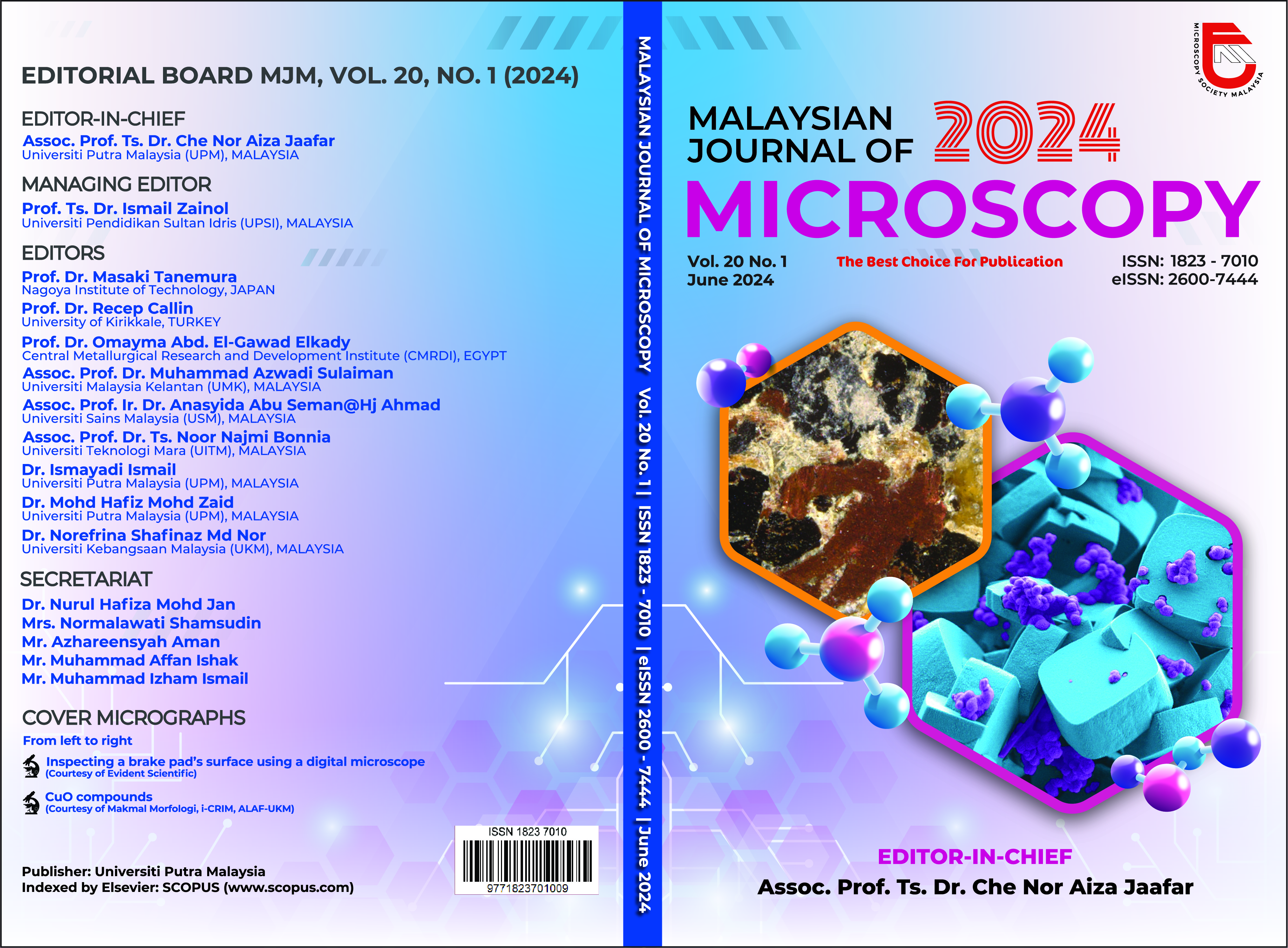INVESTIGATION ON MECHANICAL AND THERMAL PROPERTIES OF POLY (LATIC ACID) (PLA)/FISH SCALES HYDROXYAPATITE (FsHA) COMPOSITES
Abstract
This study investigates biomaterial composites made from a poly(lactic acid) (PLA) polymer matrix and hydroxyapatite (HA) extracted from fish scales (FsHA) for biomedical applications, especially in 3D printing. Fish scale HA is considered a halal alternative to synthetic or bone-derived HA. The research aims to explore the chemical, mechanical, and thermal properties of PLA/FsHA composites. Samples were prepared by melt-blending PLA with varying FsHA weights (10-50 wt%) at 190 °C, followed by hot pressing. Mechanical properties were analyzed using tensile tests, while scanning electron microscopy (FESEM) characterized the morphology of fractured specimens. Fourier transform infrared spectroscopy (FTIR) studied the functional groups between PLA and FsHA. Thermal properties, including glass transition temperature (Tg) and melting temperature (Tm), were investigated using differential scanning calorimetry (DSC). Mechanical analysis revealed that optimal properties were achieved at 20 wt% FsHA filler loading, with tensile strength, yield strength, and elongation at break measured at 80 MPa, 56 MPa, and 35.4%, respectively. FESEM analysis showed that FsHA improved stress distribution, enhancing mechanical properties. FTIR results confirmed surface interactions between the PLA matrix and FsHA filler. Additionally, the incorporation of FsHA improved the thermal stability of the composites. In conclusion, the study indicates that PLA/FsHA composites exhibit improved mechanical properties with the addition of FsHA, although the impact on thermal properties is minimal. These findings suggest that PLA/FsHA composites hold promise for future biomedical applications, particularly in 3D printing, due to their enhanced mechanical performance and the suitability of fish scale HA as a halal material.


